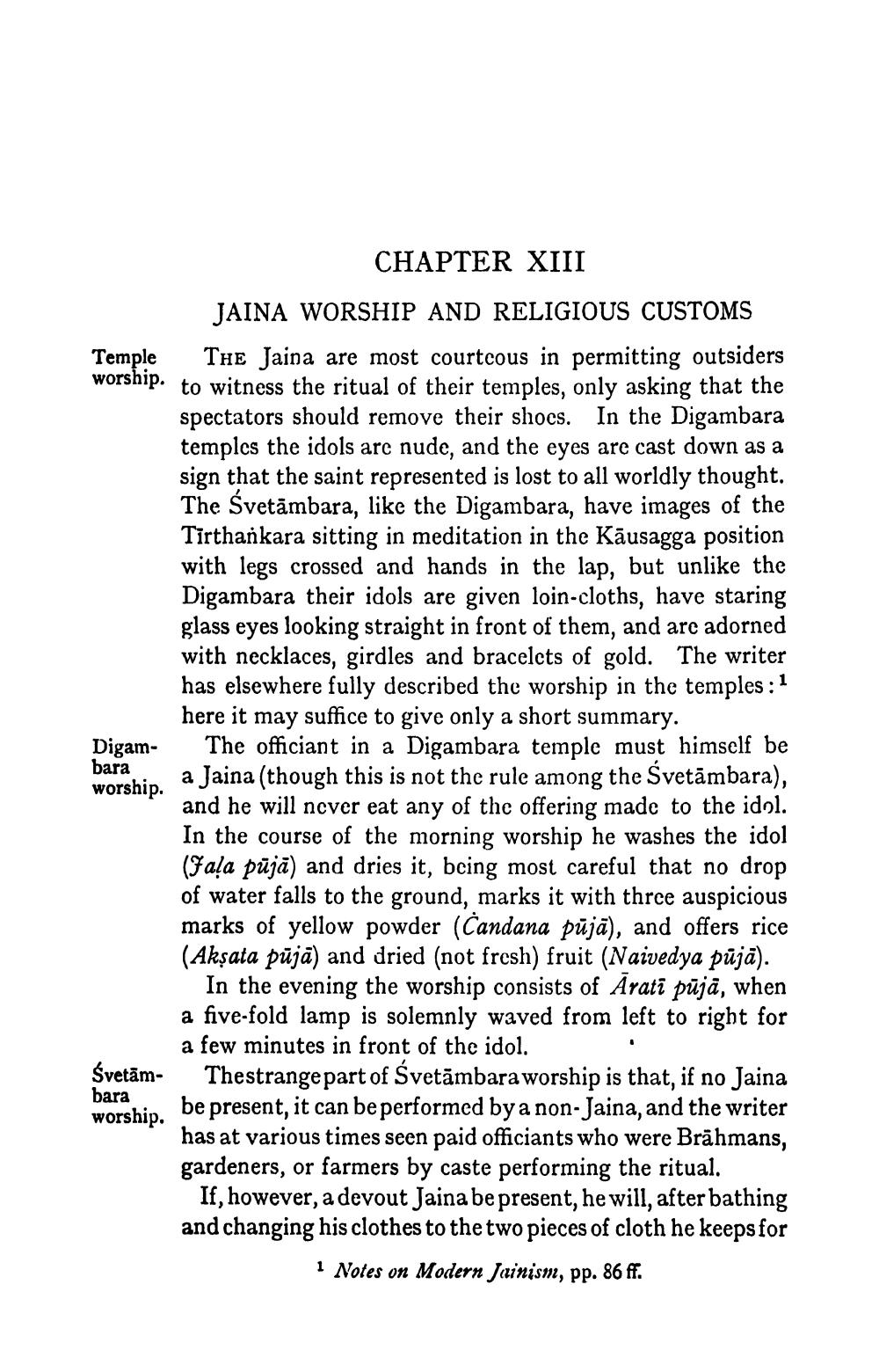________________
CHAPTER XIII JAINA WORSHIP AND RELIGIOUS CUSTOMS Temple The Jaina are most courtcous in permitting outsiders worship. to witness the ritual of their temples, only asking that the
spectators should remove their shocs. In the Digambara temples the idols are nude, and the eyes are cast down as a sign that the saint represented is lost to all worldly thought. The Svetāmbara, like the Digambara, have images of the Tirthankara sitting in meditation in the Kāusagga position with legs crossed and hands in the lap, but unlike the Digambara their idols are given loin-cloths, have staring glass eyes looking straight in front of them, and are adorned with necklaces, girdles and bracelets of gold. The writer has elsewhere fully described the worship in the temples: 1
here it may suffice to give only a short summary. Digam- The officiant in a Digambara temple must himself be bara
in a Jaina (though this is not the rule among the Svetāmbara), worship.
and he will never eat any of the offering made to the idol. In the course of the morning worship he washes the idol (Fala pūjā) and dries it, bcing most careful that no drop of water falls to the ground, marks it with three auspicious marks of yellow powder (Candana pūjā), and offers rice (Akşata pūjā) and dried (not fresh) fruit (Naivedya pūjā).
In the evening the worship consists of Aratī pājā, when a five-fold lamp is solemnly waved from left to right for a few minutes in front of the idol.
Thestrange part of Svetāmbaraworship is that, if no Jaina worship. hip. be present, it can be performed by a non- Jaina, and the writer
has at various times seen paid officiants who were Brāhmans, gardeners, or farmers by caste performing the ritual.
If, however, a devout Jaina be present, he will, after bathing and changing his clothes to the two pieces of cloth he keeps for
1 Notes on Modern Jainism, pp. 86 ff.
bara




